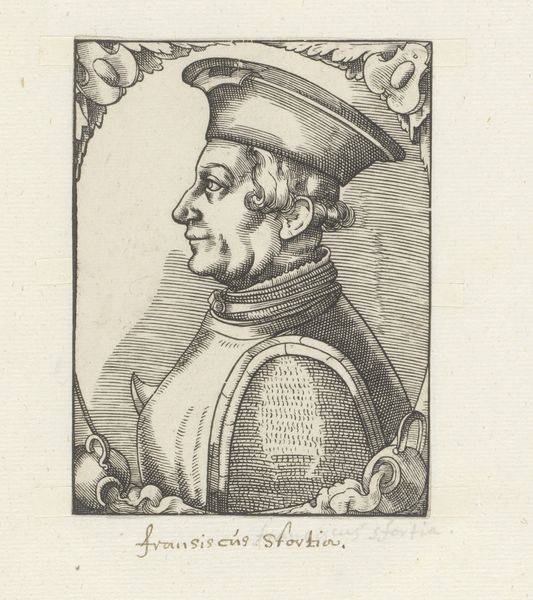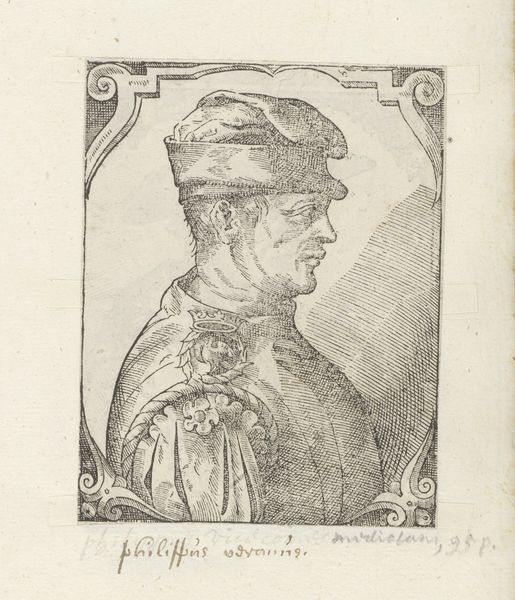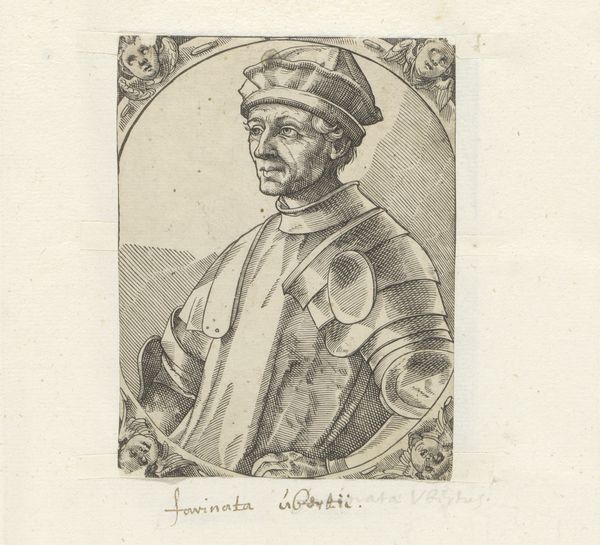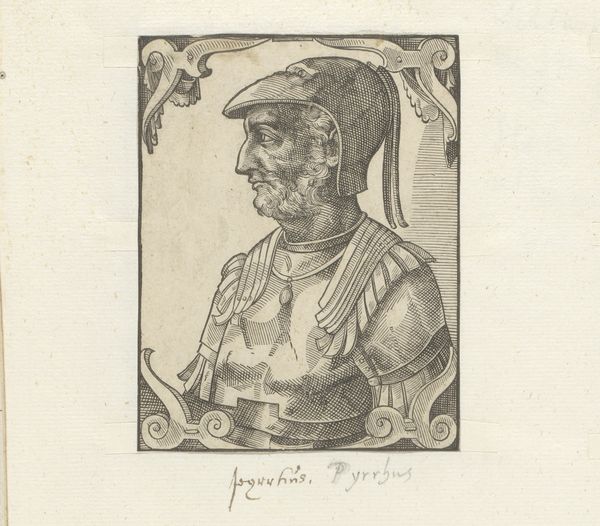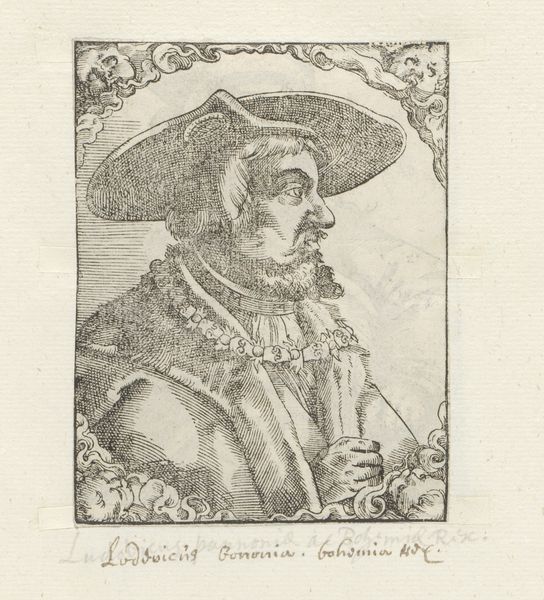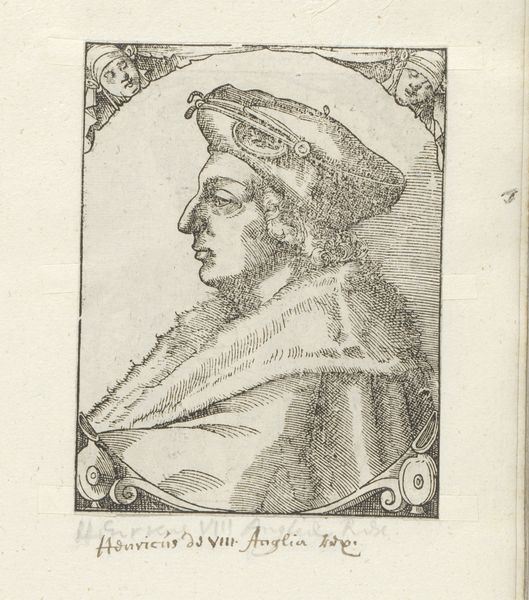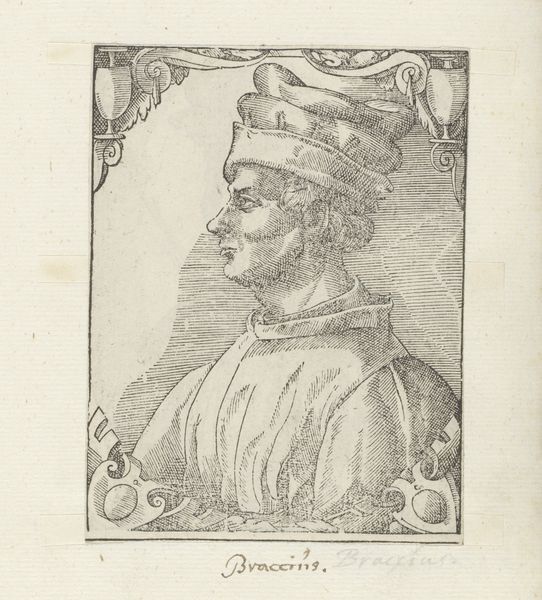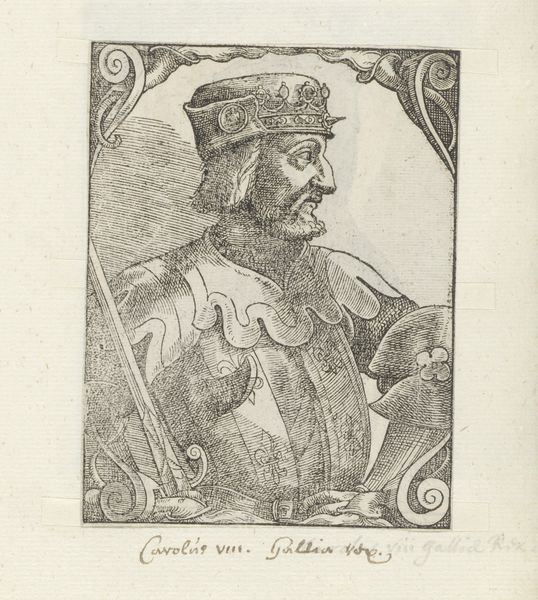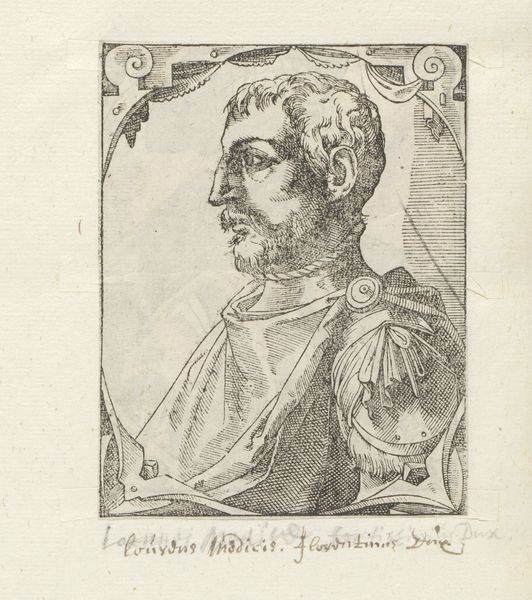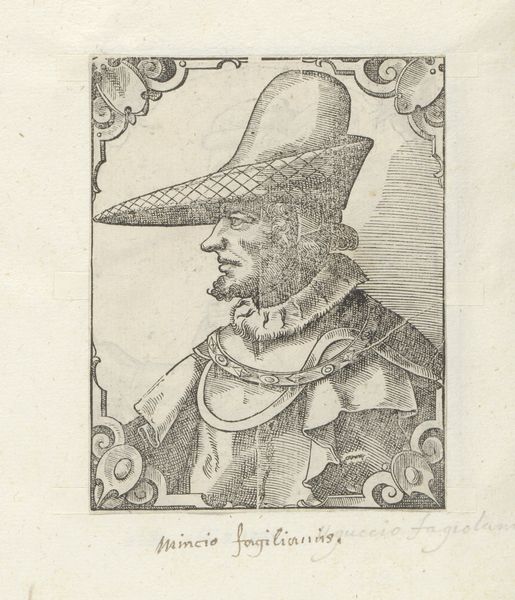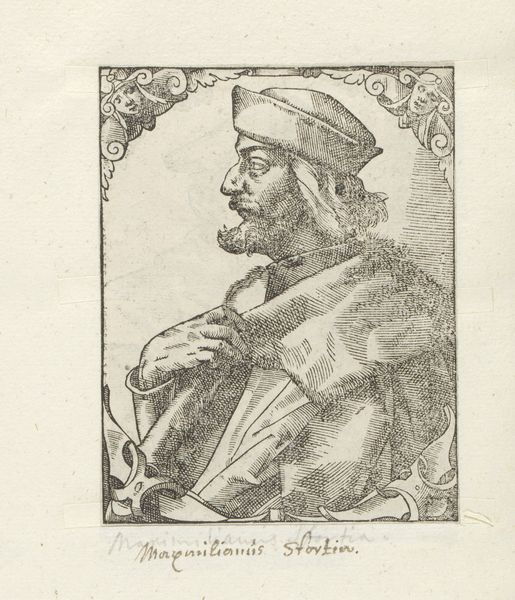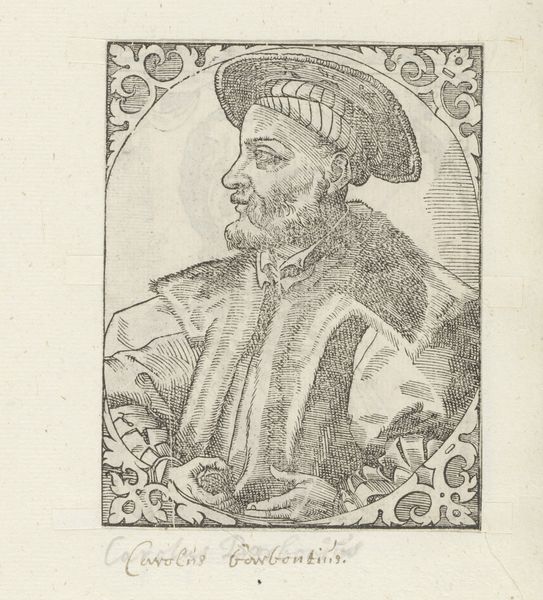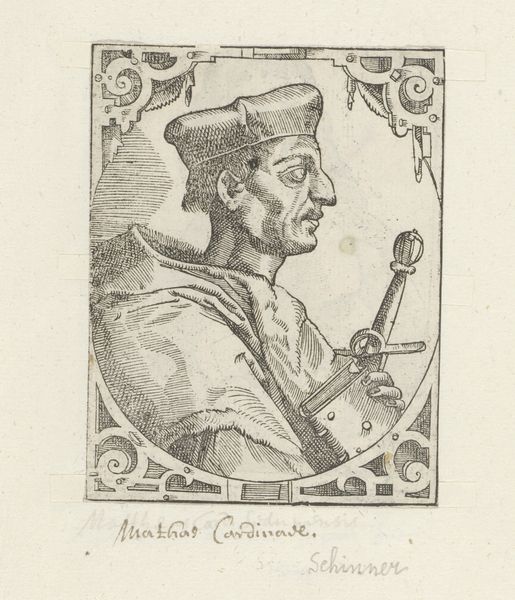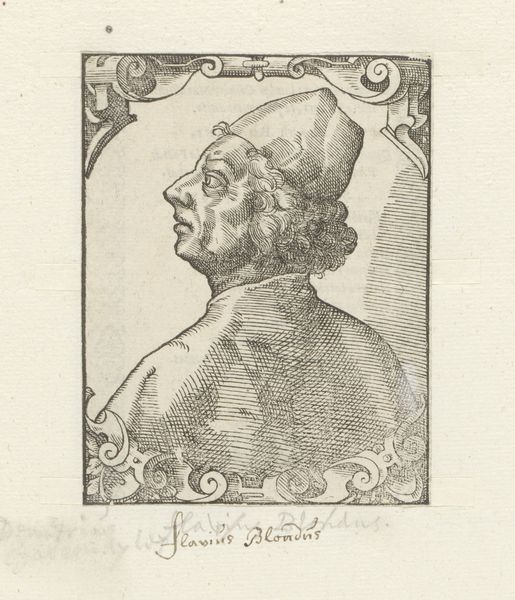
print, engraving
#
portrait
# print
#
11_renaissance
#
history-painting
#
engraving
Dimensions: height 110 mm, width 84 mm
Copyright: Rijks Museum: Open Domain
This print of Johan Hawkwood was created by an anonymous artist, using engraving, a process dependent on the burin, a specialized cutting tool. Its sharp point is pushed through the copper plate, creating furrows in the metal. Look closely, and you'll notice how the density of lines creates shading, giving volume to Hawkwood's face and clothing. The engraver would have needed immense control, and the ability to visualize the final image in reverse. Prints like this one played a crucial role in disseminating images and ideas. They were relatively inexpensive to produce, and easily portable, which meant that likenesses of important figures like Hawkwood could be widely circulated. While engraving had long been a craft process, the proliferation of prints in this era reflects an increasingly commercialized art world, a step towards modern modes of production. It's a reminder that even seemingly simple images have a complex story to tell about labor, skill, and the spread of visual culture.
Comments
No comments
Be the first to comment and join the conversation on the ultimate creative platform.
